Treating acne
Shriyal Sethumadhavan delves into popular acne types and related treatments.
The demand for anti-acne related treatments have been on the rise. “People are aware that there are various effective treatments available for controlling acne and managing acne scars and pigmentation,” says
Dr Shubha M Kesari, Dermatologist and Cosmetic Dermatologist, Medical Director, Nypunya Aesthetic Clinic, Bengaluru.
Patients expect a holistic approach. “They want a long-term cure and expect no recurrence,” says Dr Ami Shah, Dermatologist, Trichologist, Cosmetologist and Laser Expert, Shah Skin Cosmetic and Laser Centre.
“They form 20 per cent of my practice which translates to approximately 20 patients a day, says Dr Amit Bangia, Dermatologist, Dr Bangias Skin and Laser Clinic. “This is just in the winters and I am sure it would go up in the summer.”
While hormones, changing lifestyle along with genetics could be listed among the various reasons that lead to acne, it is always best to treat it in its earlier stages and prevent scarring.
Aesthetic Medicine connected with some of the experienced dermatologists from across the country to understand the common and popular acne types and their approach to treating the same.
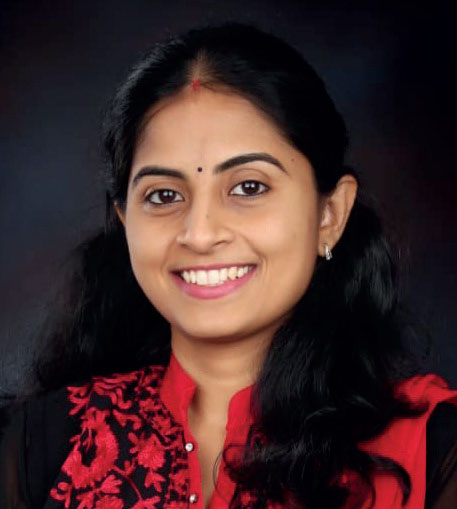
Dr Shubha M Kesari
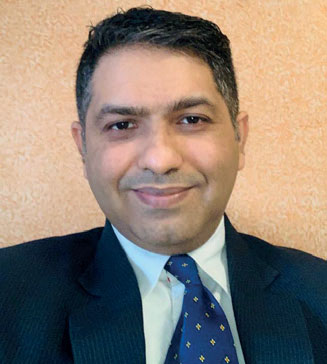
Dr Amit Bangia
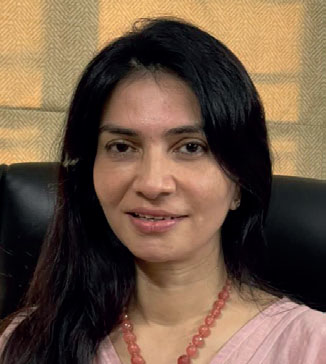
Dr Ami Shah
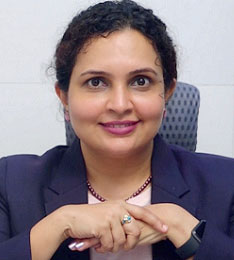
Dr Rupali Pavaskar
Adolescent acne
What causes this acne type?
As Dr Rupali Pavaskar, Dermatologist, Cosmetic Dermatologist and Trichologist, Dr Rupali Pavaskar’s Clinic & Transforme Dermo-Cosmetic Center, Thane, shares: “Angrogen surge, playing in dust, inadequate cleaning and emotional development (immaturity) lead to adolescent acne.” Also, evidently in the current scenario, we see excess carbohydrate consumption, hence insulin resistance; lack of physical activity; disturbed sleeping habits; and fierce competition with bullying that could be among the causes.
“Teenage acne responds well to topical remedies and a good face care practice using the right type of non-comedogenic products,” says Dr Kesari.
Dr Bangia estimates, “80-85 per cent of the teenagers will develop some form of clogged pores or acne.” He advises his patients to wash the face a minimum two to three times a day with a mild face wash and water to remove excess sebum and open-up clogged pores. “Cut down on fast food and empty calories,” he says, suggesting, “Topical antibiotic retinoid combination.” In severe cases, Dr Bangia adds, “a course of doxycycline where there are high chances of scarring. Especially for acne conglobata or cystic acne, he recommends a course of systemic retinoids.
The treatment begins with a routine skin care, which includes a cleaning lotion, moisturizer, and a sunscreen, says Dr Shah. Depending on the acne stage, she suggests, “Topical medication such as benzoyl peroxide or adapalene or both and a topical antibiotic like Clindamycin or Nadifloxacin. She also recommends oral antibiotics if required in the case of moderate to severe acne. “Rule out PCOD in girls with recurrent acne, premenstrual flare and a history of irregular menstrual cycle, and plan the treatment accordingly,” says Dr Shah. Lifestyle modification in terms of exercise and avoiding sugar and dairy is must as these can aggravate acne.
Sharing her treatment plan, Dr Pavaskar customises a good and uncomplicated skincare routine after talking to the child and not his/her parents. She focuses on understanding the reason behind impaired lifestyle as against admonishing them against it and correcting one unhealthy activity at a time. “Some children are good at tablets some with creams,” she says, suggesting, “Devise a treatment strategy based on this, unless it is Extensive Grade 1 comedonal acne or Grade 3, 4 acne.” She mentions Isotretinoin as her favourite as it works the best in controlling oil secretion and the glow that it gives, hooks the kids onto the treatment. “Topically, I prefer Salicylic acid in case of fewer comedones with seborrhoea or sensitive and dry skin, tretinoin in case of moderate to severe Grade 1 comedonal acne (more than 10-15 comedones), benzoyl peroxide in case of inflammatory acne. I prefer a moisturising, oil controlling, sunscreen (all in one) as expecting kids to multilayer would be too much.” Sharing an extra tip, Dr Pavaskar says, “Watch for any generation differential issues between the parents and the child and try to ease the impasse situation by reaching a golden midway. The family will hook on to you for life!”
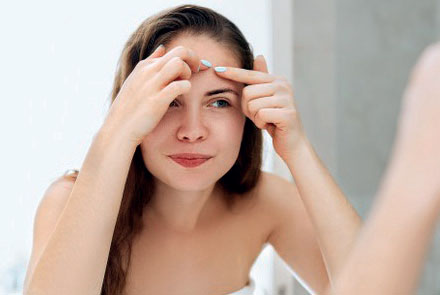
Pityrosporum folliculitis and body acne
What causes this acne type?
Dr Pavaskar responds: “Excess scalp seborrhoea, dandruff; and inadequate cleansing of the scalp.” Speaking of the current scenario that could just add to the causes, she says, “Applying hair styling products, applying water repeatedly to style the hair, pollution, and hair cosmetic treatments followed by use of extra moisturising products to maintain the shine.”
Sharing her treatment plan, Dr Pavaskar says, “There is a need to adequately control the dandruff or scalp seborrhoea. Men can wash hair with a mild shampoo daily. Women should wash the hair at least thrice a week. Avoid applying conditioner on the scalp. Avoid oiling the scalp. Oil can be applied on the hair instead, moisturising the face or affected area during the daytime and treating it like acne at night helps in controlling P folliculitis.” She adds that scalp boils, at times, need topical steroid application since they are extremely painful. Sharing an extra tip, she says, “We should keep ourselves updated and suggest them styling tips to prevent the relapsing nature of the situation. This may go a long way to impress the patient with your knowledge in the beauty industry.”
Speaking of body acne, especially truncal acne, Dr Kesari informs that this is visible in a significant proportion of acne patients. “It is common in people who exercise in the gym regularly,” she says, adding, “Oral medications are generally necessary as it is difficult to apply topicals. Chemical peels, if done fortnight, can help in clearing it up quickly.
On her part, Dr Shah says, “Truncal acne is treated with body washes containing benzoyl peroxide and an application of benzoyl peroxide gel up to 5 % also helps treat associated dandruff if present. Salicylic acid peels also help truncal acne.”
Speaking of the treatment, Dr Bangia prefers a combination of glycolic salicylic acid cream to clear the sebum and exfoliation mixed with topical antibiotics. “This combination itself gives satisfactory results in acne as well as spots.” He adds, “In several cases, I add a course of doxycycline or systemic retinoids.” He advises to never use the two (doxycycline or systemic retinoids) together as the combination is likely to cause pseudotumor cerebri.
Managing scars and hyperpigmentation
Acne scars can be handled after achieving effective control of acne lesions. Dr Shubha M Kesari, Dermatologist and Cosmetic Dermatologist, Medical Director, Nypunya Aesthetic Clinic, Bengaluru, says, “Microneedling radiofrequency, fractional CO2 lasers, subcision, and platelet rich plasma injections, hyaluronic acid filler injections and structural fat grafting are few of the means adopted to manage acne scars. A combination of these treatments gives the best and most long-lasting results.” “Depending on the need and severity of an individual case,” Dr Ami Shah, Dermatologist, Trichologist, Cosmetologist and Laser Expert, Shah Skin Cosmetic and Laser Centre, says, “Post acne hyperpigmentation is treated with peels and lasers.” She adds, “Post acne scars are tested with CO2 fractional lasers, erbium glass lasers, microneedling RF, Dermapen, and subcision with utmost satisfactory results.”
Hormonal acne: PCOS
What causes this type of acne?
“Excess androgens, androgen hypersensitivity, insulin resistance, and prolactin abnormalities,” says Dr Pavaskar. She adds, “With contributing factors in the current scenario being similar to adolescent acne, immense work pressure and vices like smoking, drinking and frequent outside food, are also contributing factors.”
The rising incidence of PCOS has been leading to an increase in the number of hormonal acnes. “It is best to thoroughly evaluate patients, get relevant investigations like hormonal assay and ultrasound scans,” says Dr Kesari. “Lifestyle modifications such as maintaining a good-diet, regular exercise, weight reduction, and reducing stress levels are central to its management.” She adds that in few cases, there may be hormonal medications to get started with like anti-androgens.
For Dr Bangia, the best advise to treat hormonal acne is lifestyle advise: “Cut down the calories and start working out in the gym.” He observes, “Cardio along with weight training gives tremendous results in hormonal acne. Along with these, the practitioner needs to check the circulating androgens (personally I find LH:FSH ratio) to be a sensitive marker for PCOS and an ultrasound is preferable on the second day of the cycle to check for the number and size of follicles.” If the patient has an androgen excess or ultrasound features of PCOS, Dr Bangia treats it with spironolactone or OCPs, and in few cases, a combination of both along with benzoyl peroxide tretinoin for local application in the night.
Dr Pavaskar starts with a basic acne treatment and may resort to hormonal assessment after one to two months depending upon the patient response to acne treatment and lifestyle adjustment advise. “Few patients come with an internet diagnosis of PCOS and can be investigated straight away,” she says. “Isotretinoin is my drug of choice in unmarried women with normal hormonal assay. Spironolactone helps in anti-androgenic effect but should be given with oral contraceptive pills and also Isotretinoin in married women. Drosperinone and ethinyl estradiol combination is my preferred oral contraceptive pill over oestrogen progesterone combinations. I limit oral antibiotics to short bursts rather than primary line of treatment.” Sharing an extra tip, she says, “Proactively asking about other PCOS skin complaints makes them wonder “How the hell did you guess?” “My doctor is so knowledgeable!” Working on their emotional burden with an in-house counsellor would be an icing on the cake.”
Adult acne
Acne is not just a teenage malady. We also see a lot of adult-onset acne. What causes this type of acne?
“Lack of a skin care routine, ignorance towards adequate hygiene due to lack of time, pollution, ultraviolet exposure, stress, and medication,” Dr Pavaskar highlights as the causes of adult acne.
Explaining the importance of a good skincare routine depends upon the patient’s psyche and comfort. Dr Pavaskar suggests elaborate procedures for people in the metro cities, as most of them have the time and inclination to invest in multilayering of products. For those who barely have the time to wash their face in the office and leave alone sunscreen application, she recommends wipes to clean while at the desk and apply a dash of invisible sunscreen. Sharing an extra tip, she says, “Oral supplements of Vitamin C, oral sunscreens, oral antioxidants or glutathione, B12, Vitamin D3 (wherever recommended) are more advisable for this population.”
Acne that occurs in the late 20s and beyond are mainly because of hormonal imbalance, lifestyle (diet, sometimes excess makeup and stress), says Dr Bangia. “The best way to treat any disease is to remove the cause, which in this case is excess androgen and poor lifestyle along with topical retinoids, and in some cases systemic retinoids, peels, lasers and other light-based devices.”
“A significant portion of adults with acne want quick fixes as they think that their appearance hinders their professional interactions, says Dr Kesari. Hence, in addition to topical and oral medications, they also opt for procedures such as microdermabrasion, chemical peels, carbon laser peels, hydra facials and LED light treatments, which significantly hasten up the acne control process.
In terms of treatment, Dr Shah mentions, “This should be treated with antibiotics and topical medications apart from dietary and lifestyle changes.” She adds, “Get the hormonal tests done, a USG to rule out PCOS in females and other hormonal tests like a prolactin serum FSH LH. Supplement the patient with essential minerals such as zinc manganese and omega three fatty acids.” Apart from oral and topical medications, the treatment includes in-clinic procedures such as chemical peels for acne like salicylic acid peel or a black peel or a combination of peels such as salicylic-mandelic peel.
Dr Shah informs, intense pulsed light treatment to treat acne and a Q-switched laser carbon peel treatment is also done.
IN CONCLUSION!
All in all, a holistic approach beginning from a dietary advice, lifestyle modification, vitamin and mineral supplements, medical advise in terms of oral and topical medication, and use of the most safe and effective procedures together can solve acne and it’s sequel with utmost satisfaction. It is important to keep your patients informed about the importance and need for continuous care and maintenance as guided by a dermatologist even after the acne is cured as this helps in avoiding relapses.